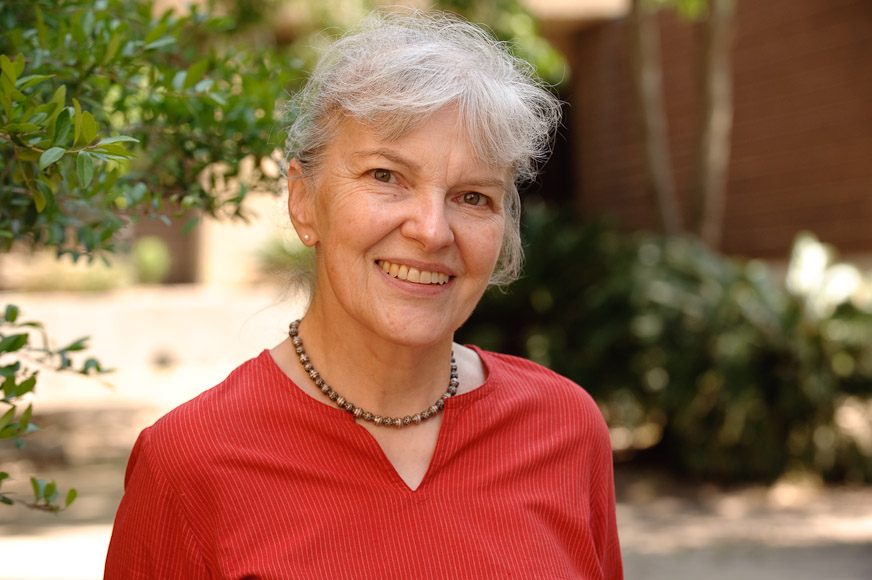Dominique G. Homberger
Alumni Professor
CDIB and SEE Divisions
PhD: University of Zurich (Switzerland), 1976
Phone: 225-578-1747
Office: A105 Life Sciences Annex
Lab: 251/255/259 Life Sciences Building
E-mail: zodhomb@lsu.edu
Area of Interest
My research program is firmly rooted in comparative anatomy as an experimental science that creates natural experiments to answer specific functional and evolutionary questions. At a basic level, it seeks to understand how complex systems can evolve further while remaining functional at all stages. My overarching working hypothesis posits that seemingly large changes during macroevolutionary processes are actually the result of relatively small changes that fundamentally affect the construction and, thus, the functioning of an organism. My research group is working on a variety of vertebrate model species from lampreys to sharks, and from alligators, birds, and mammals to human beings.
Our research program explores the functional morphology and evolution of complex systems by discovering and analyzing structures and constructional principles, and by developing theoretical concepts. Examples of our discoveries are the special construction of the avian hyoid suspension and its implication for the evolution of feeding adaptations in birds and mammals; the fundamental roles of a kinetic larynx, air sacs, and the skin in avian vocalization; the mechanical role of cutaneous fat for the movement of contour feathers; the function of the depressor feather muscles and its significance for the evolution of birds and avian flight; the impossibility of feathers evolving from the scaly integument of dinosaurs; methods of biomechanical analysis, modeling, and animation of complex skeleto-muscular systems based on CT and MRI data; the role of the human shoulder suspension apparatus in the successful global invasion by hominins; the evolution of the shoulder suspension apparatus of bipedal humans from a head suspension apparatus of quadrupedal mammals; and the postulate that systematics and comparative anatomy are based on fundamentally distinct research programs.
All our research projects are tied to our fundamental interest in the reconstruction of macroevolutionary changes as a result of individual variation and natural selection by synthesizing functional-morphological and behavioral-ecological data of extant organisms with palaeoclimatological and geological data. An example is my long-term study of the feeding and drinking behavior, functional morphology, ecology, and evolutionary history of the Psittaciformes (i.e., cockatoos and parrots), which has also implications for the evolution of the Gondwanan avifauna in general.
Selected Publications
Osborn, M.L., Rau, A.R.P. & Homberger, D.G. (subm.). Free-Body Force Analysis of the Human Shoulder Suspension Apparatus: Development and Comparative Evaluation of 2D and 3D Computational Approaches. Biomechanics and Modeling in Mechanobiology
Wood, B.M. Jia, G., Carmichael, O., Mcklveen, K. & Homberger, D.G. 2018. 3D MRI Modeling of Thin and Spatially Complex Soft Tissue Structures without Shrinkage: Lamprey Myosepta as an Example. Anatomical Record, https://doi.org/10.1002/ar.23857
Homberger D.G. 2017. The avian lingual and laryngeal apparatus within the context of the head and jaw apparatus, with comparisons to the mammalian condition: Functional morphology and biomechanics of evaporative cooling, feeding, drinking, and vocalization. Pp. 27-96 in: The Biology of the Avian Respiratory System: Evolution, Development, Structure and Function (J. Maina, ed.). Springer Verlag, New York. ISBN 978-3-319-44152-8.
Homberger, D.G. 2015. Understanding Other Species’ Needs: The Monetization of Nature — Self-Restraint and a Global Rationing System of Natural Resources as an Antidote. Chapter 5. Pp. 91-139 in Ecopsychology: Advances from the Intersection of Psychology and Environmental Protection. Volume I: Science and Theory (R.B. Hamilton & D.G. Nemeth, eds.). Praeger, Santa Barbara, CA. ISBN 978-1-4408-3172-0 or 978-1-4408-3173-7
Osborn, M.L. & Homberger, D.G. 2015. The Human Shoulder Suspension Apparatus: A Causal Explanation for Bilateral Asymmetry and a Fresh Look at the Evolution of Human Bipedality. Anat. Rec., 298 (9): 1572–1588. doi:10.1002/ar.23178. http://www.ncbi.nlm.nih.gov/pubmed/26054034 . See also Anatomy Now (Newsletter of the American Association of Anatomists), September 2015. http://amasan.informz.net/admin31/content/template.asp?sid=40684&ptid=1234&brandid=3960&uid=825289017&mi=4645285&ps=40684
Redd, T.C, Dubansky, B.H., Osborn, M.L., Tully, T.N. & Homberger, D.G. 2012. A registration algorithm for the identification of individual parrots based on the patterns of filing ridges on their upper bill tip. International Journal of Biometrics and Bioinformatics (IJBB), 6 (3): 68-91. http://www.cscjournals.org/manuscript/Journals/IJBB/Volume6/Issue3/IJBB-167.pdf
Legreneur, P., Homberger, D.G. & Bels, V. 2012. Assessment of the mass, length, center of mass, and principal moment of inertia of body segments in adult males of the brown anole (Anolis sagrei) and green, or Carolina anole (Anolis carolinensis). Journal of Morphology, 273 (7): 265-275. doi: 10.1002/jmor.20022
Homberger, D.G., Ham, K., Ogunbakin, T., Bonin, J.A., Hopkins, B.A., Osborn, M.L., Hossain, I., Barnett, H.A., Matthews II, K.L., Butler, L.G., & Bragulla, H.H. 2009. The structure of the cornified claw sheath in the domestic cat (Felis catus): Implications for the claw shedding mechanism. Journal of Anatomy, 214: 620-643. doi: 10.1111/j.1469-7580.2009.01068.x
Bragulla, H.H. & Homberger, D.G. 2009. Structure and functions of keratin proteins in simple, stratified, keratinized and cornified epithelia – a review. Journal of Anatomy, 214: 516-559. doi: 10.1111/j.1469-7580.2009.01066.x
Bragulla, H.H. & Homberger, D.G. 2007. The role of the specific, profilaggrin-containing keratohyalin granules in the developing epidermis of the fetal horse hoof. Pferdeheilkunde, 23 (1): 5-20.
Ham, K., Barnett, H.A., Ogunbakin, T., Homberger, D.G., Bragulla, H.H., Matthews II, K.L., Willson, C.S., & Butler, L.G. 2006. Imaging tissue structures: Assessment of absorption and phase contrast x ray tomography imaging at 2-nd and 3-rd generation synchrotrons. In: Developments in X-Ray Tomography V (Ulrich Bonse, ed.). Proc. SPIE 6318: 631822-1 to 631822-10.
Interdisciplinary Research Team
Leslie G. Butler (Dept. of Chemistry)
Kenneth (Kip) Matthews, II (Dept. of Physics & Astronomy)
Michelle Osborn (School of Veterinary Medicine)
Thomas N. Tully (School of Veterinary Medicine)